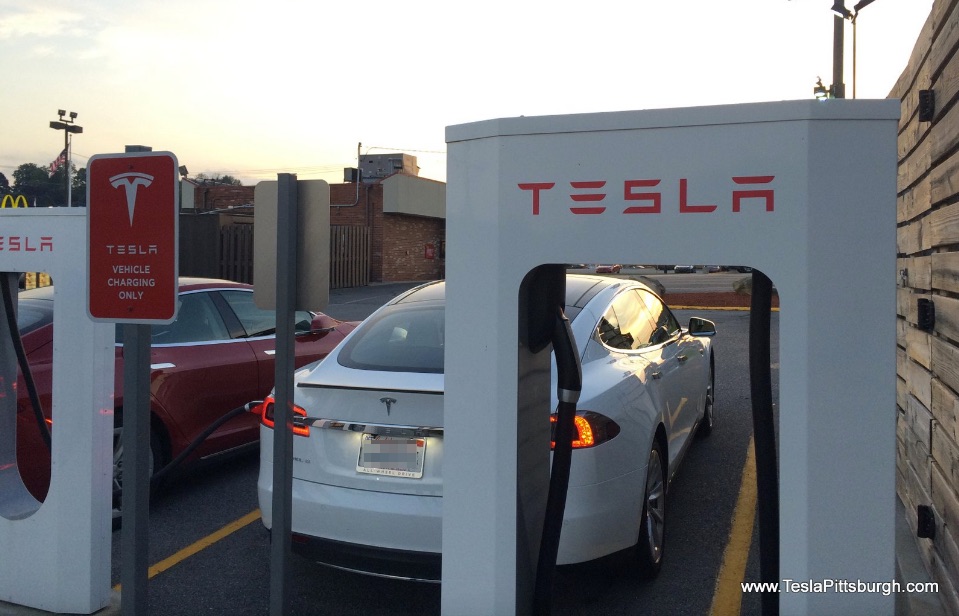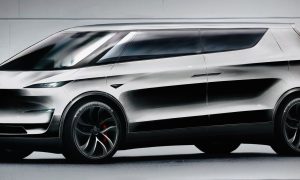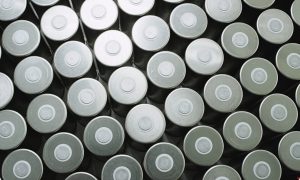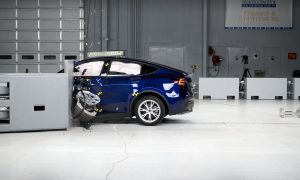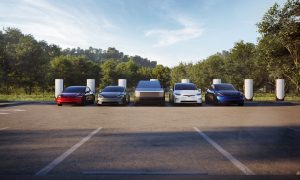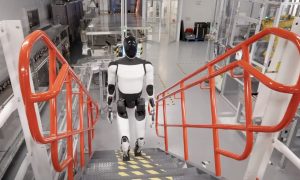Supercharger locations in the Midwestern United States are about to increase, thanks to a partnership between Tesla and the Hy-Vee grocery store chain. “The time it takes for an average shopper to get through a grocery store to get groceries is about the same time it takes to get a full charge on a decent fast charger like this,” said John Brehm, Hy-Vee director of site planning on November 15 who on hand for the introduction of three Superchargers at the West Lakes Hy-Vee in West Des Moines. “So it’s a marriage made in heaven.”
The partnership will add critically needed Supercharger locations along the heavily traveled Interstate 80 transportation corridor. Since July, eight Tesla supercharger stations have been installed at Hy-Vee stores in Coralville, West Lakes, and Davenport as well as in Peru, Illinois and Oakdale, Minnesota. Work on Superchargers at the Hy-Vee store in Lincoln, Nebraska will begin next year. Six more Midwestern installations at Hy-Vee stores are under discussion.
“[A Supercharger] is robust enough and powerful enough that people can confidently and conveniently travel hundreds and thousands of miles without any sort of compromise in terms of staying overnight or staying over the course of several hours,” said Will Nicholas, Tesla communications manager. He adds that the communities chosen are the perfect locations for new Supercharger locations. “We’re happy to be working with Hy-Vee to kind of connect the Midwest, from Chicago to Denver,” he said according to The Gazette.
Tesla has partnered with several other chains and businesses in the U.S. to make its Superchargers more accessible to the public. Ruby Tuesday restaurant chain is adding Superchargers at many of its locations, beginning with its restaurant in Miner, Missouri. The chargers there are an important link in the Supercharger network for people driving between St. Louis and Nashville.
In the mid-Atlantic area of the country, Tesla is in talks with Sheetz, a chain of several hundred gas stations, about adding Supercharger equipment at many of its stores. Merchants recognize that Tesla has rapidly created a highly desirable brand. In short, Tesla drivers are good for business.
The federal government estimates that U.S. drivers will consume 20% less gasoline than today by 2035 as the proportion of electric cars on the road increases. John Eichberger, executive director of the Fuels Institute, founded by the National Association of Convenience Stores, says, “Those kiosks that just sell gallons and smokes are going to have to change. They’re going to lose gallons. Plain and simple, no way around it.”
Gas stations of the future will be completely different from the fast paced “get ’em in, get ’em out” stores of today, Eichenberger believes. They will be more like restaurants or highway rest stops than convenience stores.
Tesla works hard at positioning its Supercharger stations in places where drivers have access to food and rest rooms. It is also sensitive to providing clean, well-lit locations where people traveling alone will feel safe, even at night. Touring by Tesla is more like the European “slow food” experience than the fast paced gas-n-go experience most drivers of conventional cars put up with.

